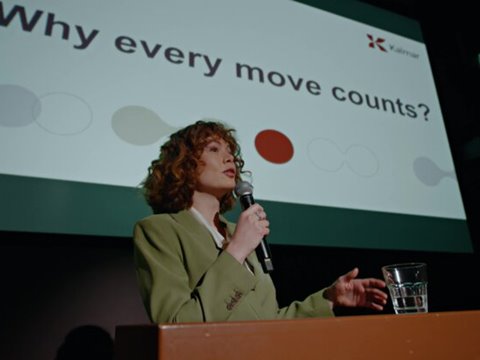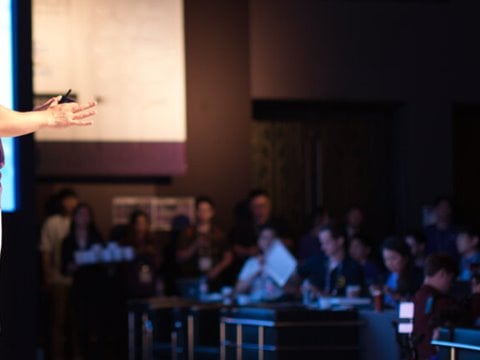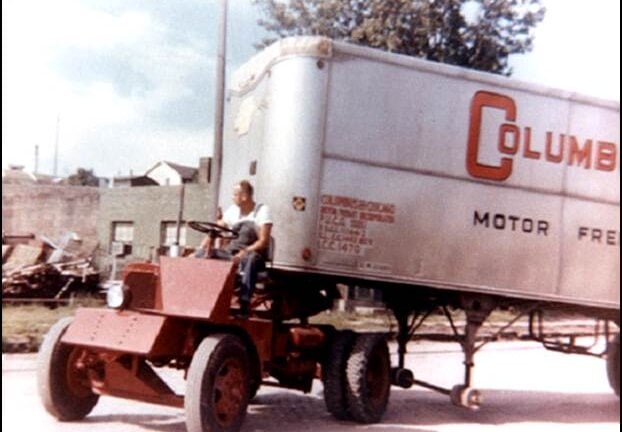With roots in Tampere, Finland; Småland, Sweden; Ottawa, Kansas; and The Netherlands, Kalmar has grown through a complex and eventful evolution to become the company it is today.
The Kalmar story starts in the 1940s
Kalmar’s history can be traced back to the 1940s, when the first straddle carrier for industrial application was built in Härmälä, near Tampere, Finland. After WWII, Valtion Metallitehtaat (State Metal Factories), which had previously focused on manufacturing and maintaining aircraft and locomotives, was renamed Valmet in 1951. As a part of the war reparations paid by Finland to the Soviet Union in the 1950s, Valmet's Härmälä factory received an order for 500 lumber carriers, which was an early precursor of the container straddle carrier that would eventually dominate the global logistics industry.
Forklift revolution begins in Småland, Sweden in 1949
The origins of forklifts can be traced back to Sweden's Småland region, where in 1949, the first forklift for use at a local sawmill was built in a small workshop in the town of Lidhult. Lidhults Mekaniska Verkstad (LMV) began serial production in 1952, and it later expanded into port operations, introducing a patented solution that equipped trucks with six wheels on each axle instead of the usual four.
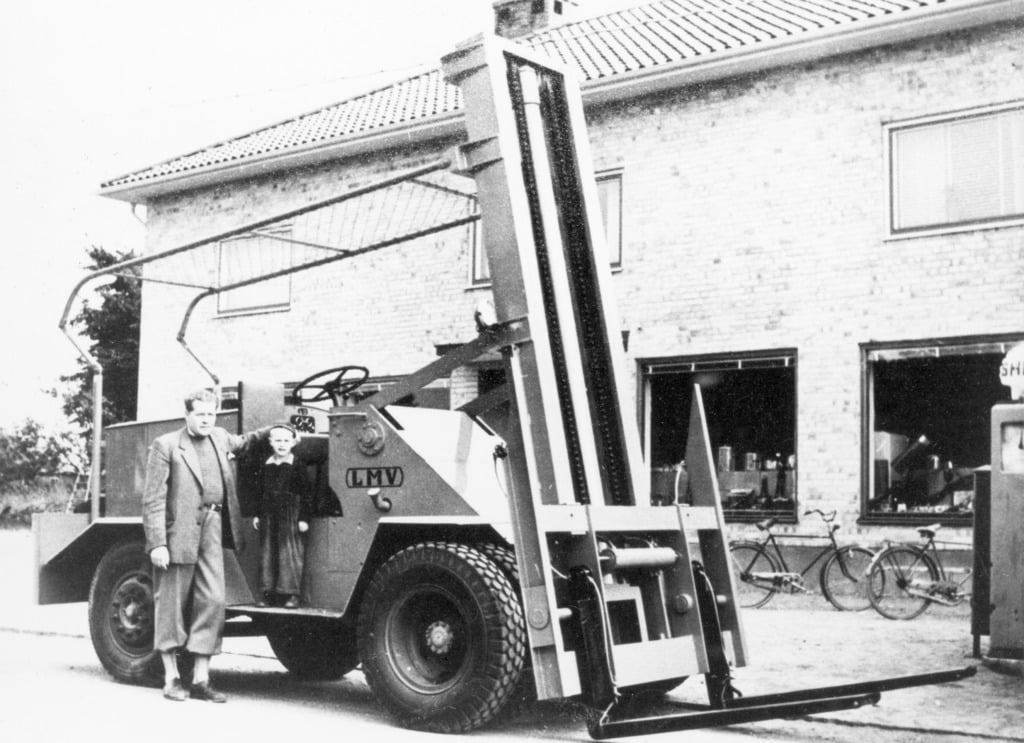
World's first terminal tractor for moving trailers in ports, terminals, warehouses, and distribution facilities built in 1958
Kalmar's line of terminal tractors originated in the town of Ottawa, Kansas, in the central United States, where Ottawa Steel introduced the world's first terminal tractor in 1958 for moving trailers in ports, terminals, warehouses, and distribution facilities.
First prototypes for container straddle carriers in 1976
By the 1970s, containerisation had begun to reshape the global logistics industry. In Finland, Valmet introduced its first prototypes for container straddle carriers in 1976. Evolving into the Kalmar Classic Straddle Carrier, over 2,500 units were delivered over the following four decades, with many still operational today.
Introducing the first electric forklift in 1980
Kalmar introduced the first electric forklift in 1980.
Kalmar taking shape in Sweden
In 1974, LMV was acquired by the state-owned company Kalmar Verkstad AB, which, a year later, acquired Ljungbytruck. Together, the companies, now called Kalmar LMV, were able to compete on an equal footing with leading US-based manufacturers. Throughout the 1980s, Kalmar LMV experienced consistent growth in international markets, and by the mid-decade, it had sales and service in over 50 countries and produced an unrivalled range of counterweight trucks. Following the company's growth and several ownership changes, it was renamed Kalmar Industries and listed on the Stockholm stock exchange in 1994.
The first reachstacker prototype in 1985
In 1985, Kalmar completed the first prototype reachstacker, with commercial deliveries beginning the following year. This versatile machine would become a mainstay in the global logistics industry, with each generation of machines expanding its handling capacity.

Laying the groundwork for today's Kalmar in the 1990s
In the 1990s, several mergers and acquisitions laid the groundwork for today's Kalmar, a global entity weaving together industrial legacies from Sweden, Finland, and the USA. In 1994, the Finnish state-owned corporation Sisu acquired Ottawa Trucks, as well as Valmet's material handling business. In 1997, Finland-based Partek, in turn, acquired Sisu Terminal Systems along with a majority share in Kalmar Industries, merging the two companies. By 2000, Kalmar Industries had become fully owned by the Finnish Partek and was delisted from the Stockholm stock exchange.
Expanding the portfolio with container spreaders in 2000
Partek's acquisition of a Swedish container spreader manufacturer, Bromma, in 2000 further expanded Kalmar's portfolio. Founded in 1965, Bromma invented the telescopic spreader, which enables terminals to accept containers of different sizes without changing the spreader for every lift. Today, this design still rules the world of spreaders.
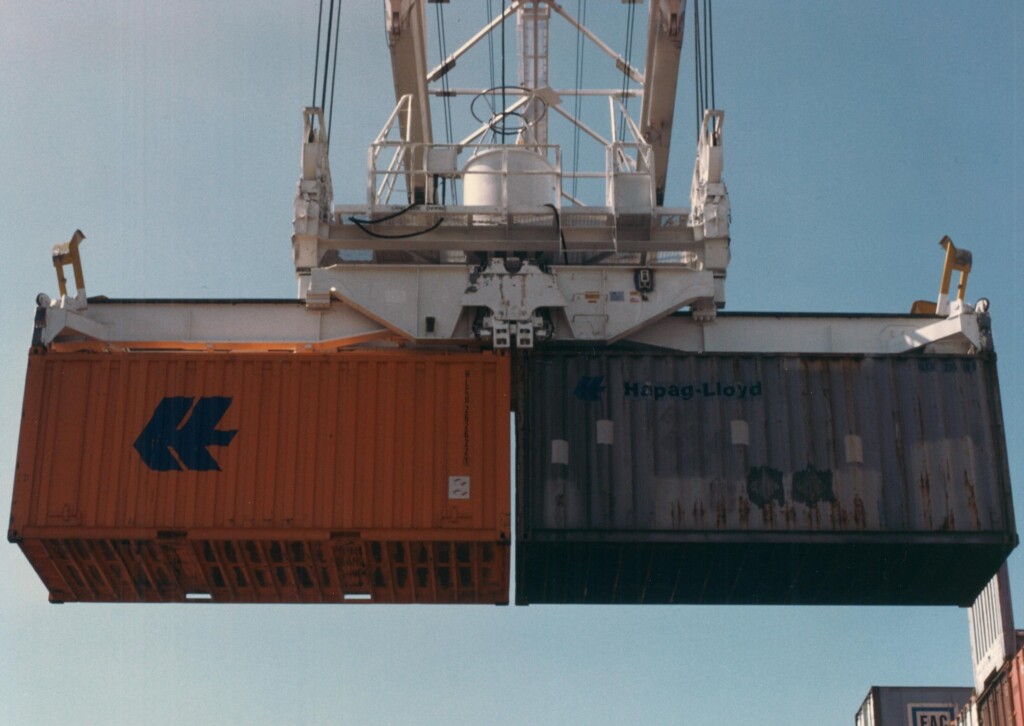
Strengthening expertise in the heavy crane business in 2001
In 2001, Kalmar Industries extended its offering through the acquisitions of Dutch ship-to-shore crane and straddle carrier manufacturer Nelcon, as well as maintenance company Groot-Hensen. These acquisitions brought strong expertise in the heavy crane business to Kalmar, ultimately contributing to the company’s development of terminal automation solutions.
Establishing Cargotec in 2005
In 2002, the Finnish lift and escalator company Kone acquired all shares of Partek. In 2005, another major restructuring took place as Kone demerged its material handling businesses into Cargotec Corporation, consisting of the Kalmar, Hiab and MacGregor businesses.
Opening the first fully automated straddle carrier terminal in 2005
In 2005, Kalmar witnessed a milestone in terminal automation with the opening of the first fully automated straddle carrier terminal in Brisbane, Australia, which was equipped with the Kalmar AutoStrad™ system. During the same year, Kalmar reinforced its global presence by establishing a manufacturing plant in Shanghai, China.
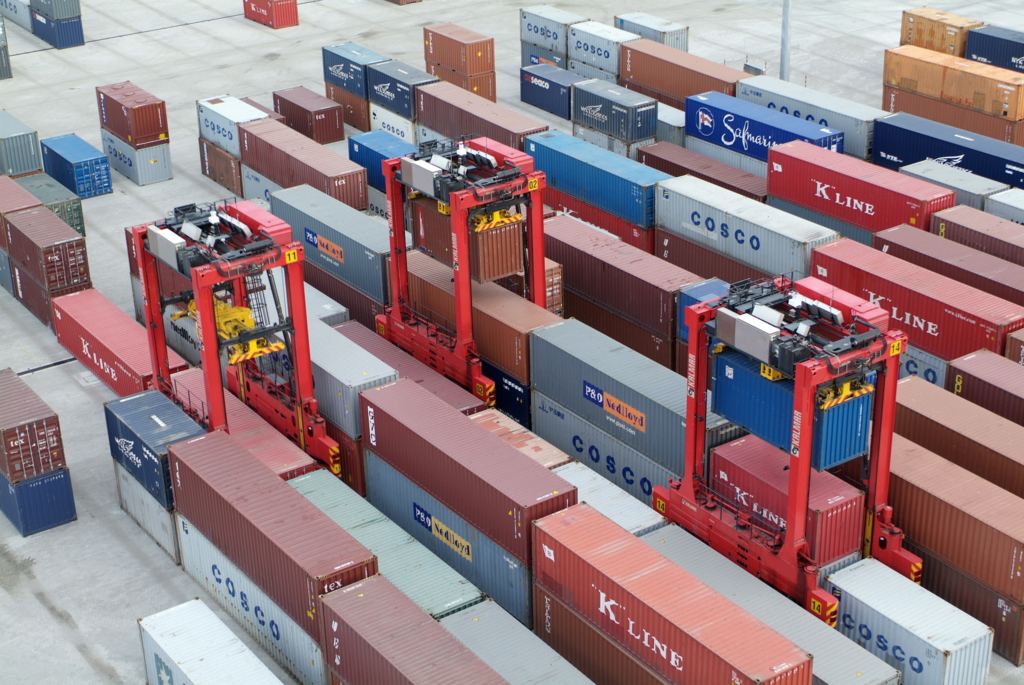
Kalmar AutoShuttle™, zero emission and hybrid RTG cranes introduced
During this decade, Kalmar also introduced its Kalmar AutoShuttle™, zero emission and hybrid RTG cranes, as well as the first-generation hybrid-drive straddle carriers.
Opening an assembly facility in Stargard in 2010
In 2010, Cargotec opened an assembly facility in Stargard, Poland. The manufacturing of straddle carriers, reachstackers and empty container handlers was relocated from Lidhult to Stargard in 2013, with forklift trucks soon following.
Introducing the Kalmar SmartPort portfolio and Kalmar One
In 2011, Kalmar acquired the US-based terminal operating systems provider Navis, which was part of Kalmar until 2021. During the same decade, Kalmar enhanced its automation capabilities by introducing the Kalmar SmartPort portfolio and Kalmar One, a flexible and scalable open automation system for handling containers in ports and terminals.
Launching the fully electric portfolio in 2021
Since introducing the first electric forklift in 1980, Kalmar has been a pioneer in the industry. Kalmar launched its fully electric portfolio in 2021, consisting of a wide range of material handling equipment from electric reachstacker to heavy, medium, and light forklifts, terminal tractors as well as straddle carriers.
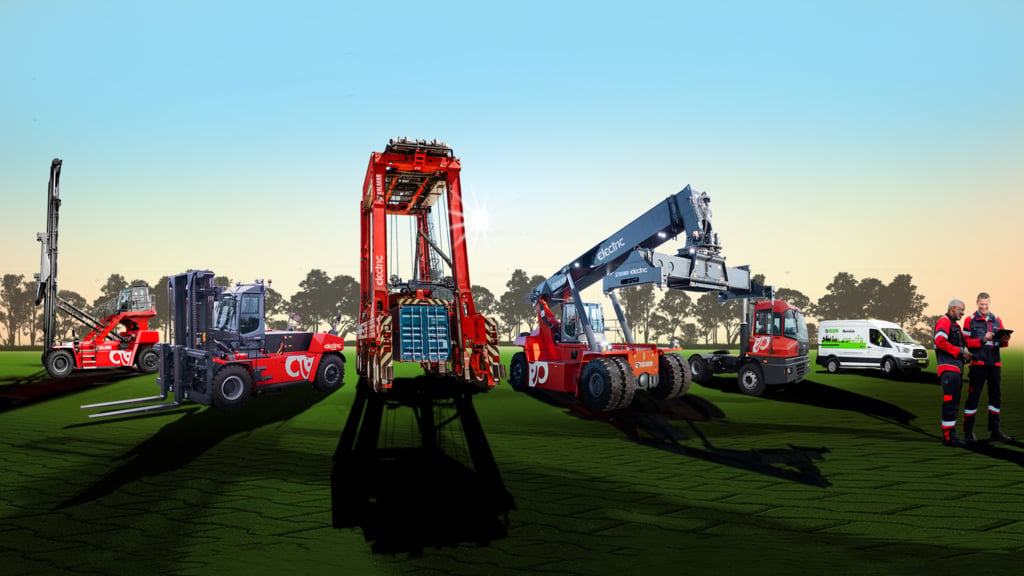
Starting the robotisation journey in 2021
Kalmar's commitment to innovation is further evident in its introduction of the Kalmar Robotic Portfolio in the same year, a promising range of intelligent, flexible and autonomous mobile equipment solutions for the future.
Exiting the heavy cranes business in 2022
In 2022, Kalmar decided to exit the heavy cranes business and transfer the intellectual properties and assets related to heavy cranes to Rainbow Industries Co. Ltd. (RIC), shifting its focus to its current portfolio.
Introducing the Electric Straddle Carrier Charge Family in 2023
Kalmar also introduced the Electric Straddle Carrier Charge Family, which includes battery technologies, charging solutions, and software to support straddle carrier operators in their transition towards decarbonised operations.
2024 and onwards: Kalmar listed on Nasdaq Helsinki
Kalmar was listed on Nasdaq Helsinki on 1 July 2024, following the demerger from Cargotec. Today, Kalmar continues to lead the way in sustainable material handling around the world, with a strong focus on electrification across its equipment range, and increasing lifetime value and maximising uptime through a global services network.
Throughout its history, Kalmar's story has been built on local innovations that have evolved into globally successful products. With employees in 30 countries and customers all around the globe, this idea is more relevant than ever. The original birthplaces of its product lines – Tampere, Ljungby and Ottawa – remain as its core innovation and development hubs, ready to tackle the challenges of the 21st century.






